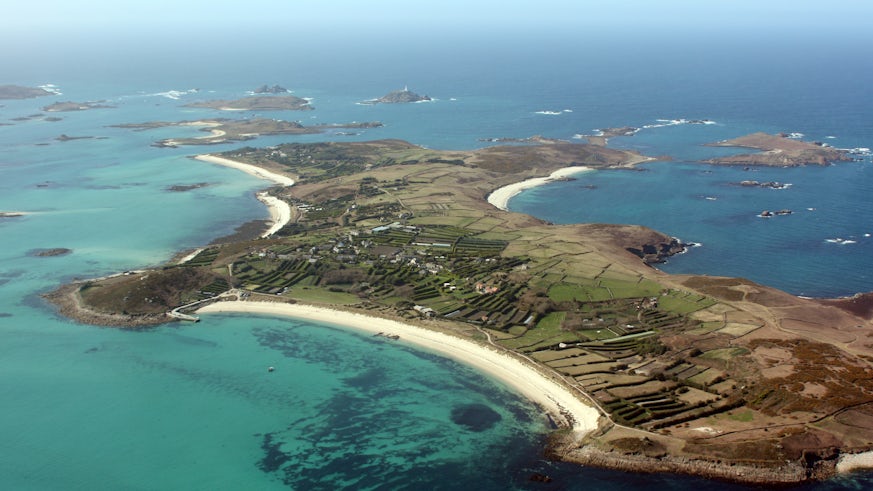Lyonesse project published
26 August 2016

The results of a seven-year project involving the University to study the impact of sea level rise on the Isles of Scilly over the past 12,000 years, has been published.
The Lyonesse Project was commissioned by Historic England following the discovery of a submerged forest in Scilly.
Carried out between 2009 and 2013, the aim of the project was to reconstruct the evolution of the physical environment of Scilly during the Holocene, investigate the progressive occupation of this changing coastal landscape by early peoples, explore past and present climate change and sea-level rise and develop geophysical techniques for mapping submerged ancient landscapes.
The team also aimed to improve management, promote better understanding of the islands' historic environment and encourage local community engagement with the historic environment
Analysis of samples of peat and pollen recovered from a range of sites during the project, including beaches and the submerged forest, have provided a unique insight into the development of the landscape through the Holocene epoch, set against the backdrop of changing sea levels.
Dr Jacqui Mulville from the University’s School of History, Archaeology and Religion who led Cardiff’s involvement in the project said: “The Lyonesse project developed as part of a 10 year long collaboration between Cardiff University and Cornwall Archaeology to revitalise archaeological research in the Isles of Scilly. Teams of staff and students have been involved in excavations, survey and outreach and it is fantastic to see our work exploring the islands relationship with the sea coming to fruition. In a world of changing climate and shorelines an examination of the past helps to inform our present, and plan for the future.
“This project bought together English and Welsh expertise and employed cutting-edge techniques to shed new light on ocean dynamics. The results of the Lyonesse project provide an unprecedented level of detail on the rate of sea level change in South West Britain. Building on this success we are now applying techniques honed by this research to the coast of South Wales. As part of new doctoral research student Rhiannon Philp is examining the preserved forests, peats and footprints of the Gower to model coastal changes over the past 10,000 years.”
The research was undertaken by the Cornwall Archaeological Unit, part of Cornwall Council, with a team of experts from Aberystwyth, Cardiff, Exeter, Plymouth, Oxford and Glasgow Universities and Historic England’s Scientific Dating Team. Volunteers and local experts from the Cornwall and Isles of Scilly Maritime Archaeological Society and the Islands Maritime Archaeology Group were also involved.
Charlie Johns, Archaeology Projects Officer, Cornwall Archaeological Unit said: “The new data shows that the 500-year period between 2,500 and 2,000 BC saw the most rapid loss of land at any time in the history of Scilly — equivalent to losing two-thirds of the entire modern area of the islands.
“After this the rate of change slowed significantly so that by circa 1500 BC the pattern of islands was approaching that of today, but with the dramatic difference of a vast intertidal area of saltmarsh in what is now the islands’ inner lagoon.
“Much of this would have remained useful land, especially for grazing animal stock and would have been passable with ease almost all of the time. It was not until there was an open channel north of St Mary’s during most states of the tide that the saltmarsh began to erode rapidly: radiocarbon dates suggest this is likely to have occurred in the early medieval period, after 600-670 AD.”
Daniel Ratcliffe, Inspector of Ancient Monuments for Historic England in the South West, added: “Historic England is very pleased to have funded this ground-breaking research. Our understanding of the internationally important archaeological heritage of Scilly, is fundamentally bound up in our understanding of environmental change.
“This new cutting-edge research will be instrumental in refining our knowledge of how Scilly’s populations have responded to the ever present challenges of living within an evolving coastline throughout history.”
The Lyonesse Project: a study of the historic coastal and marine environment of the Isles of Scilly is published by Cornwall Council.

